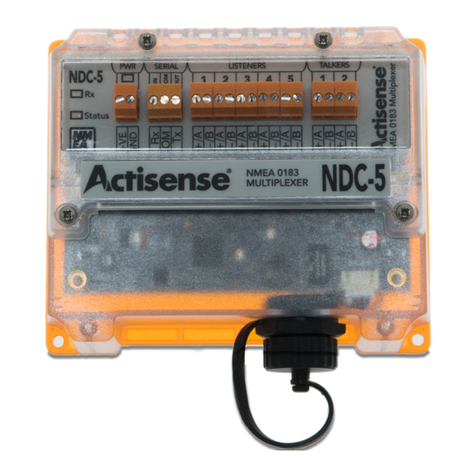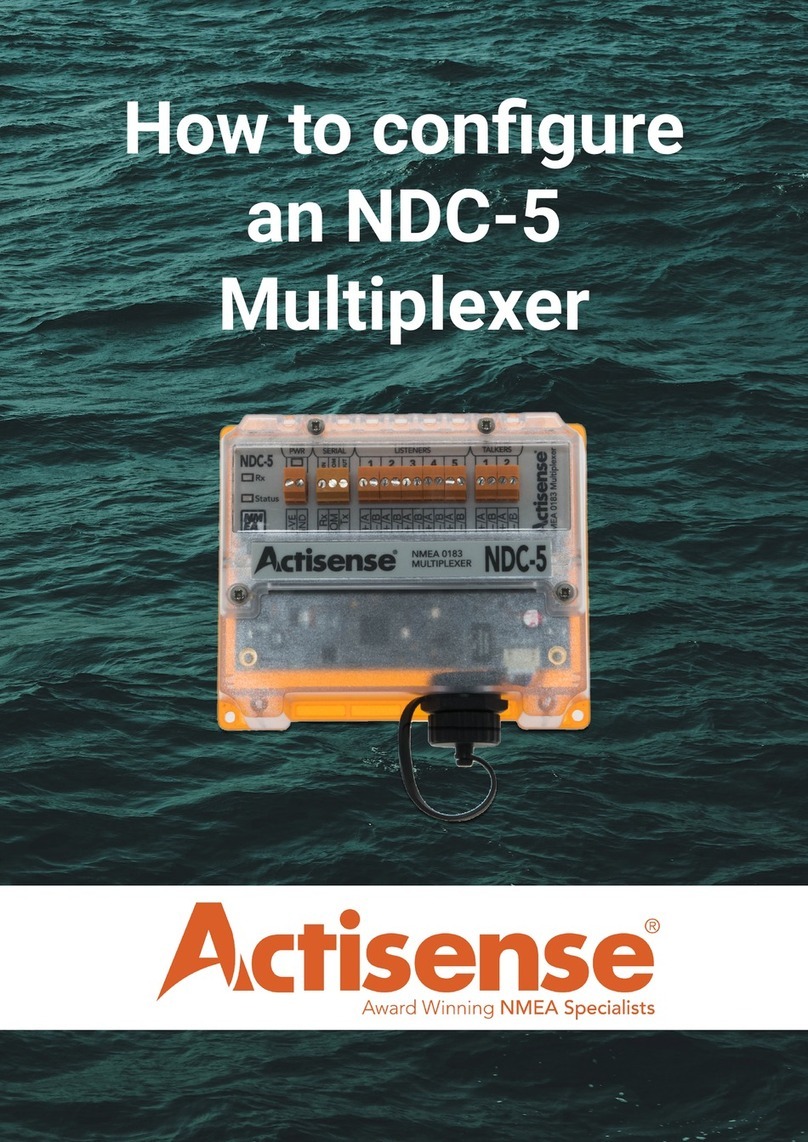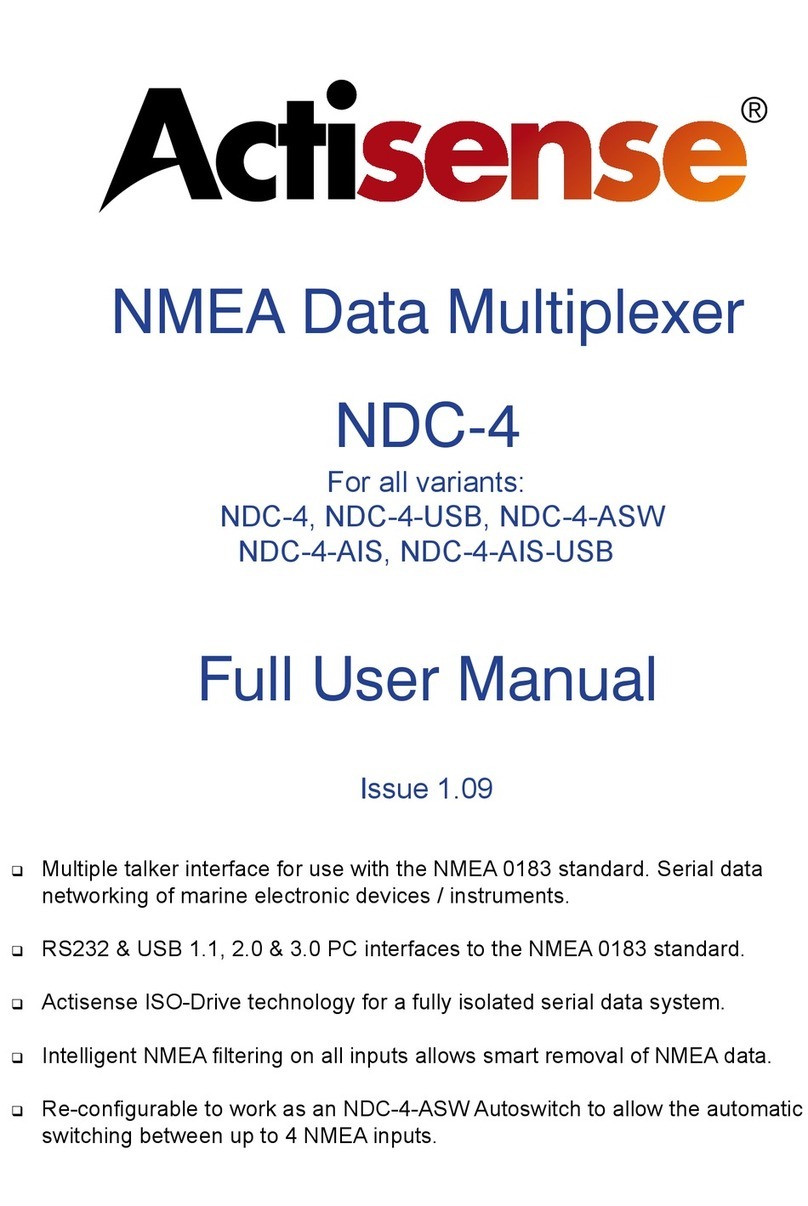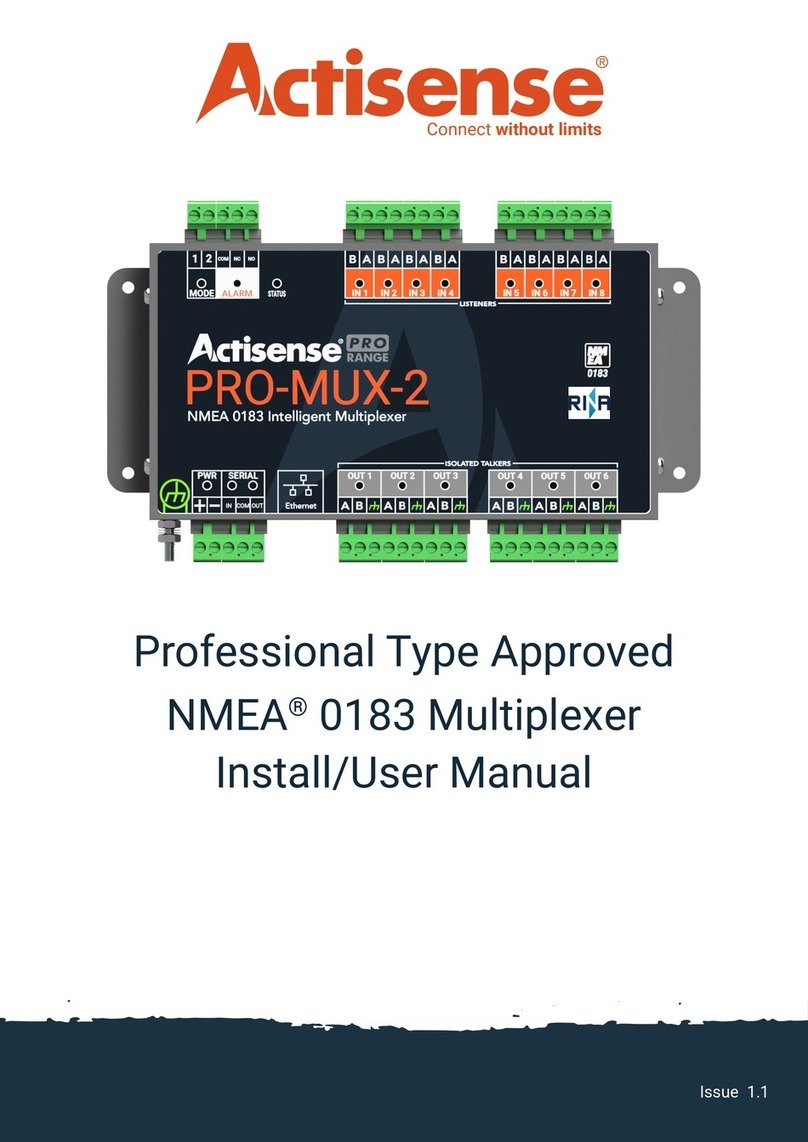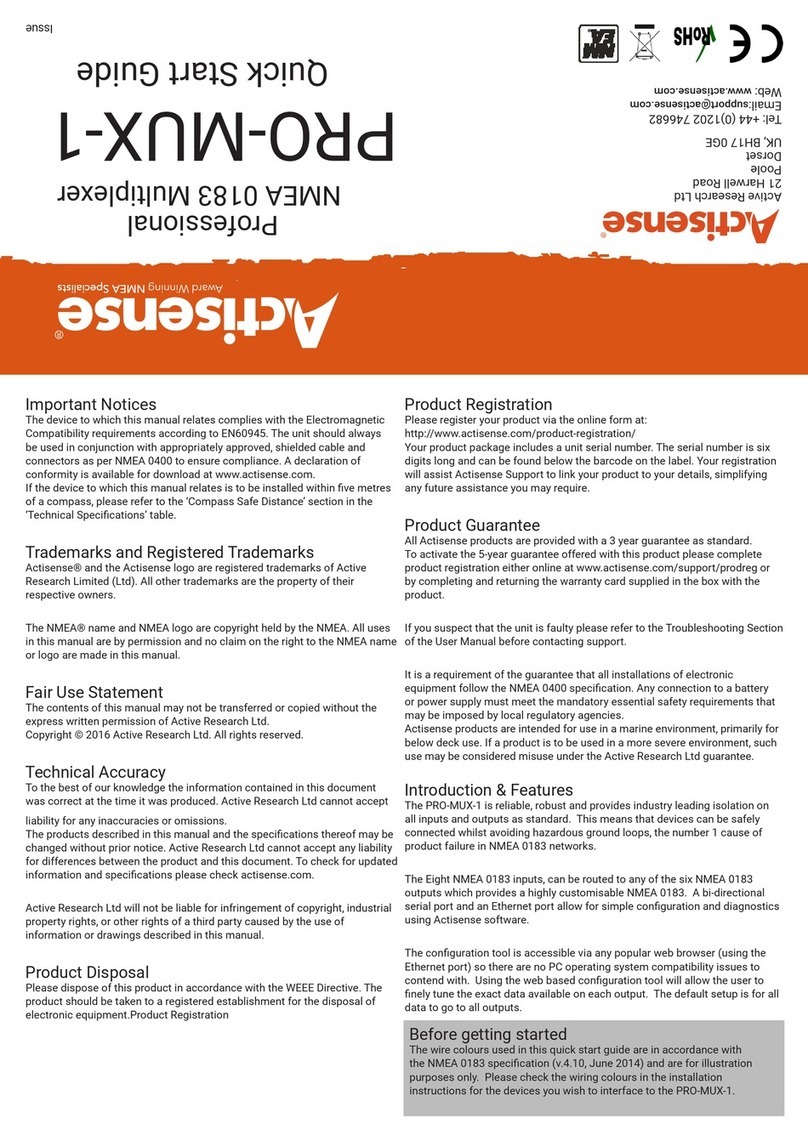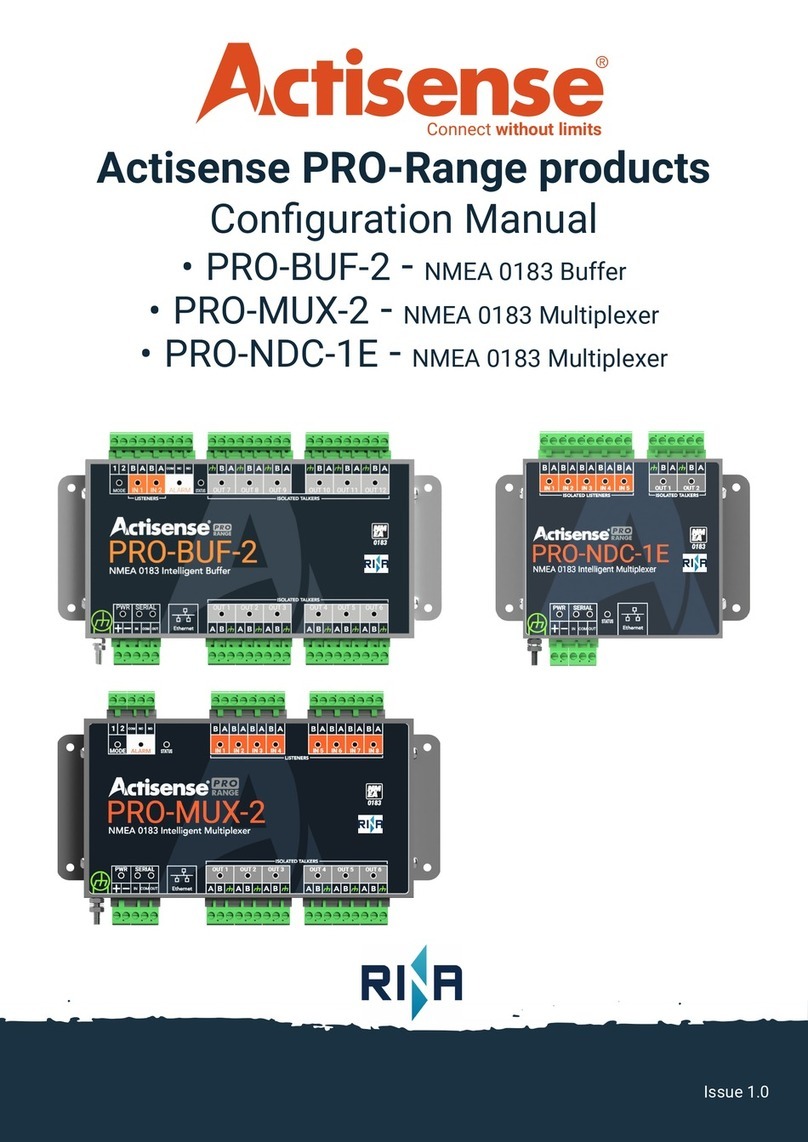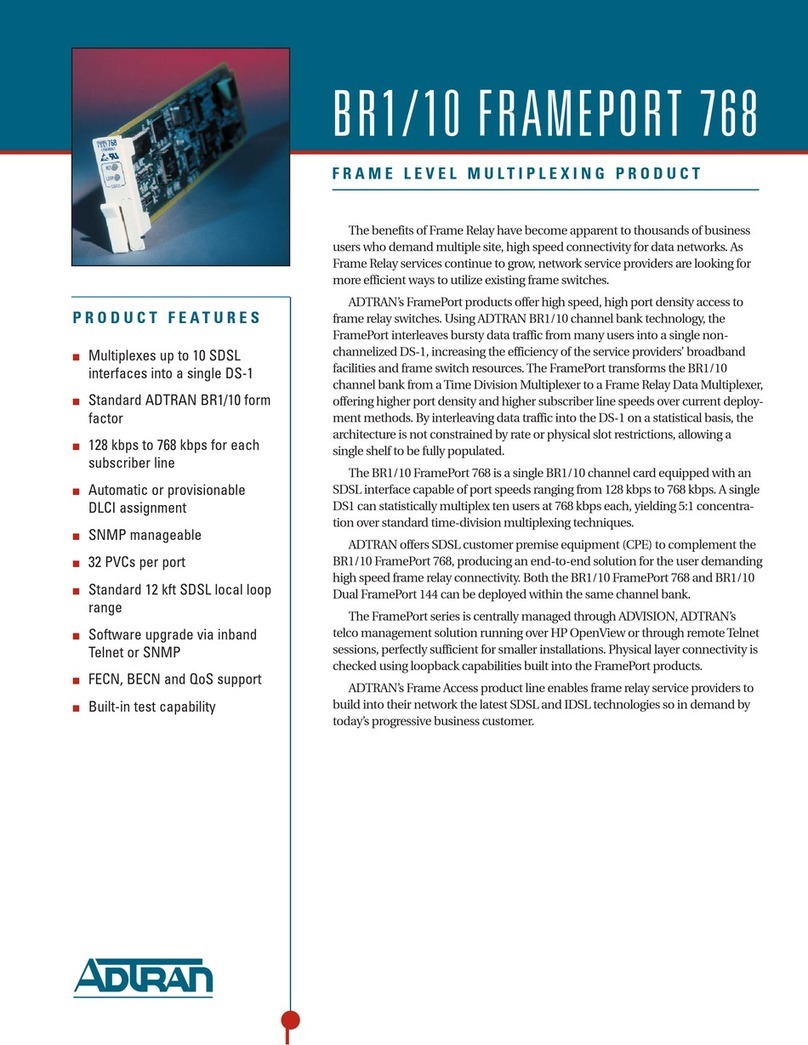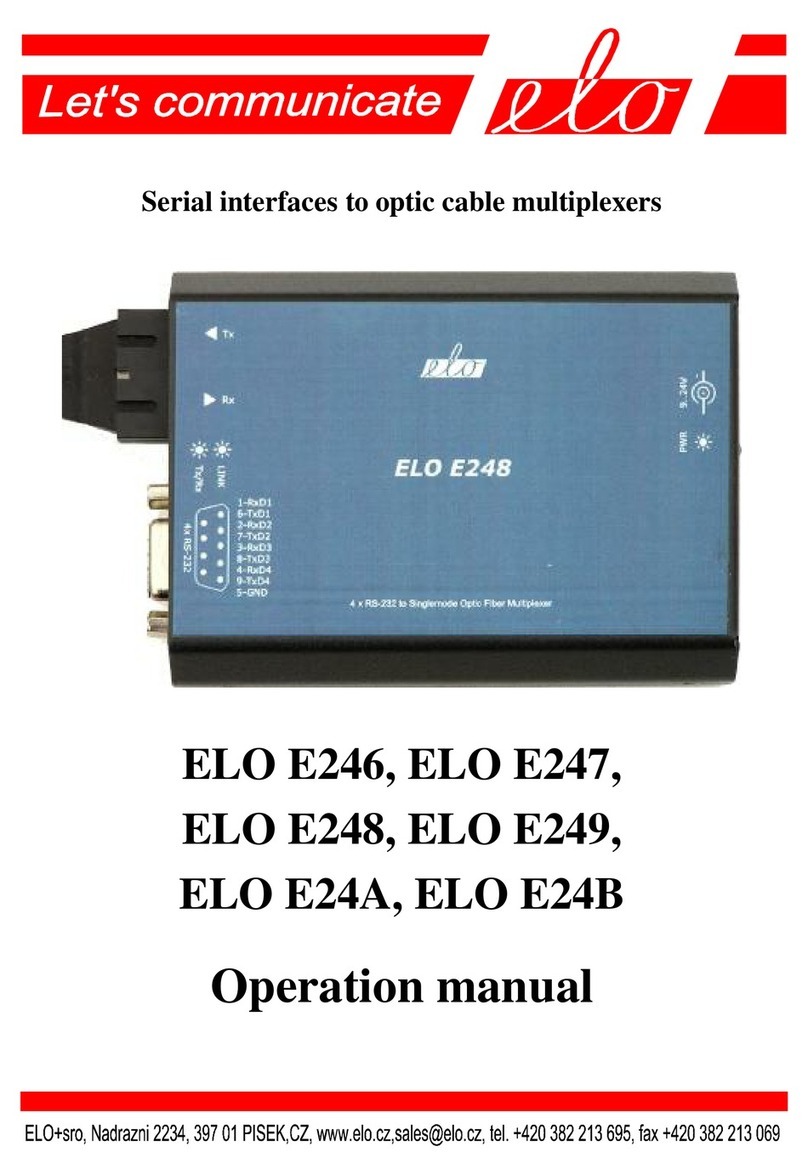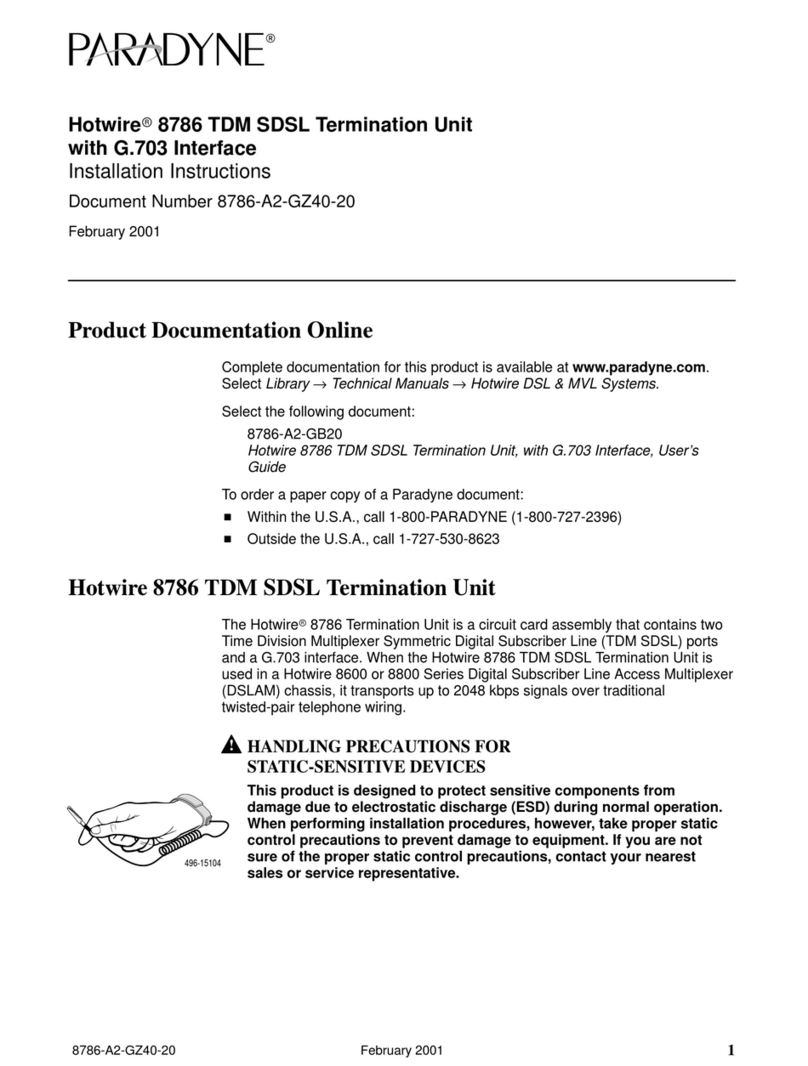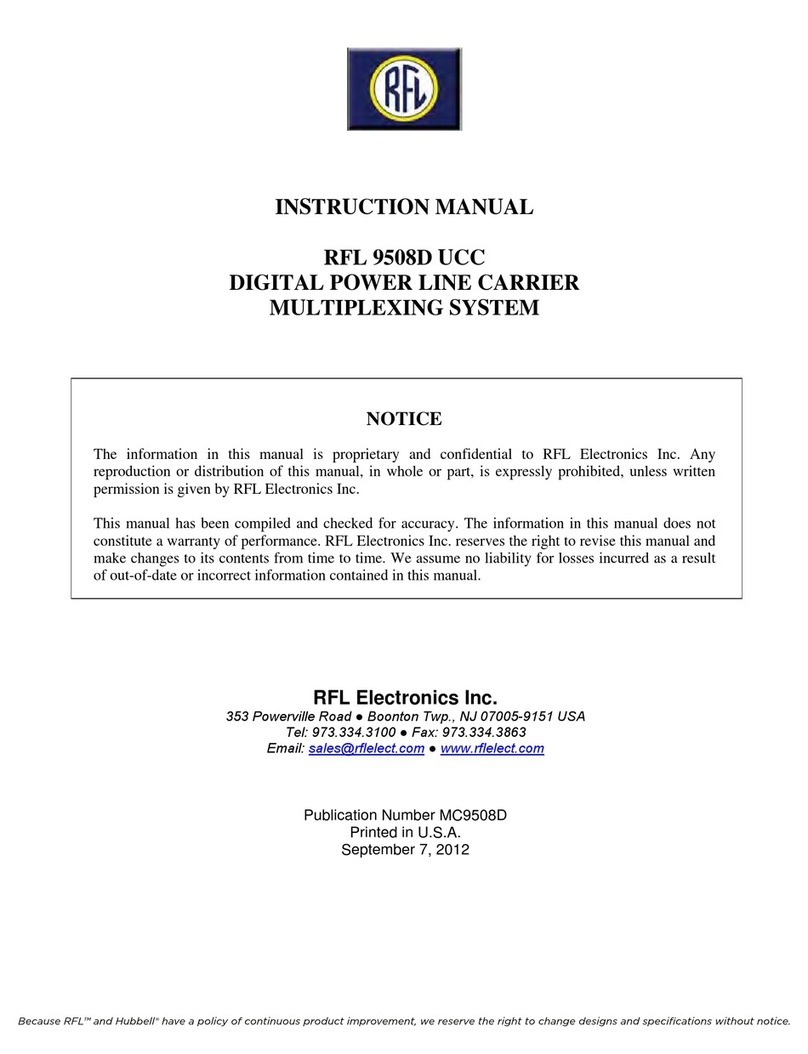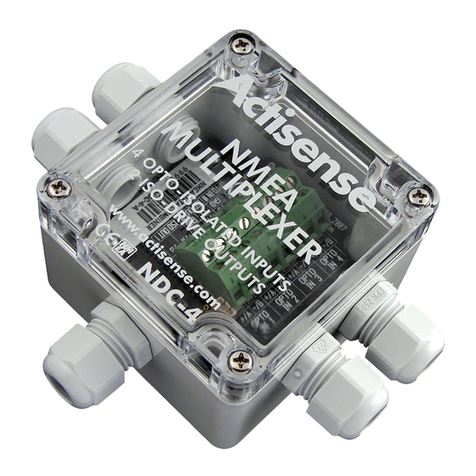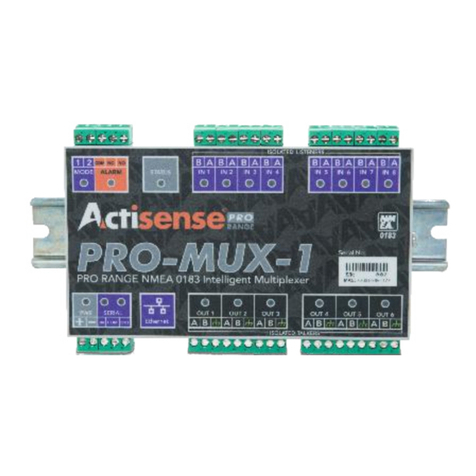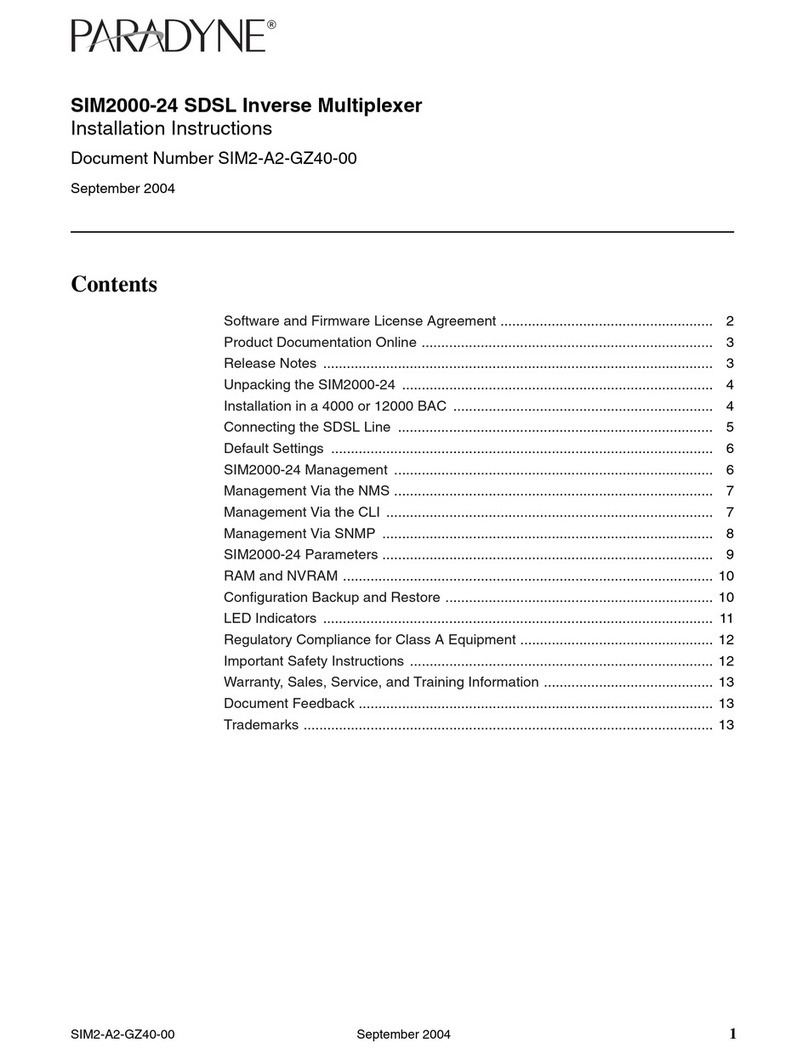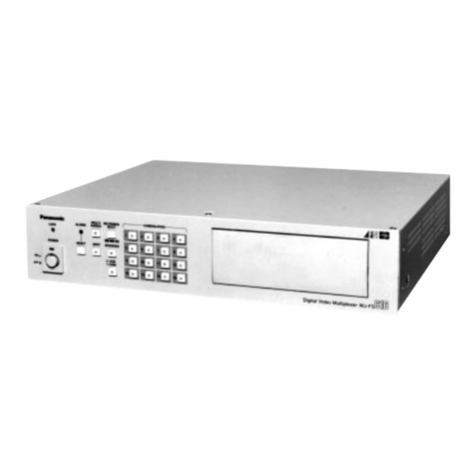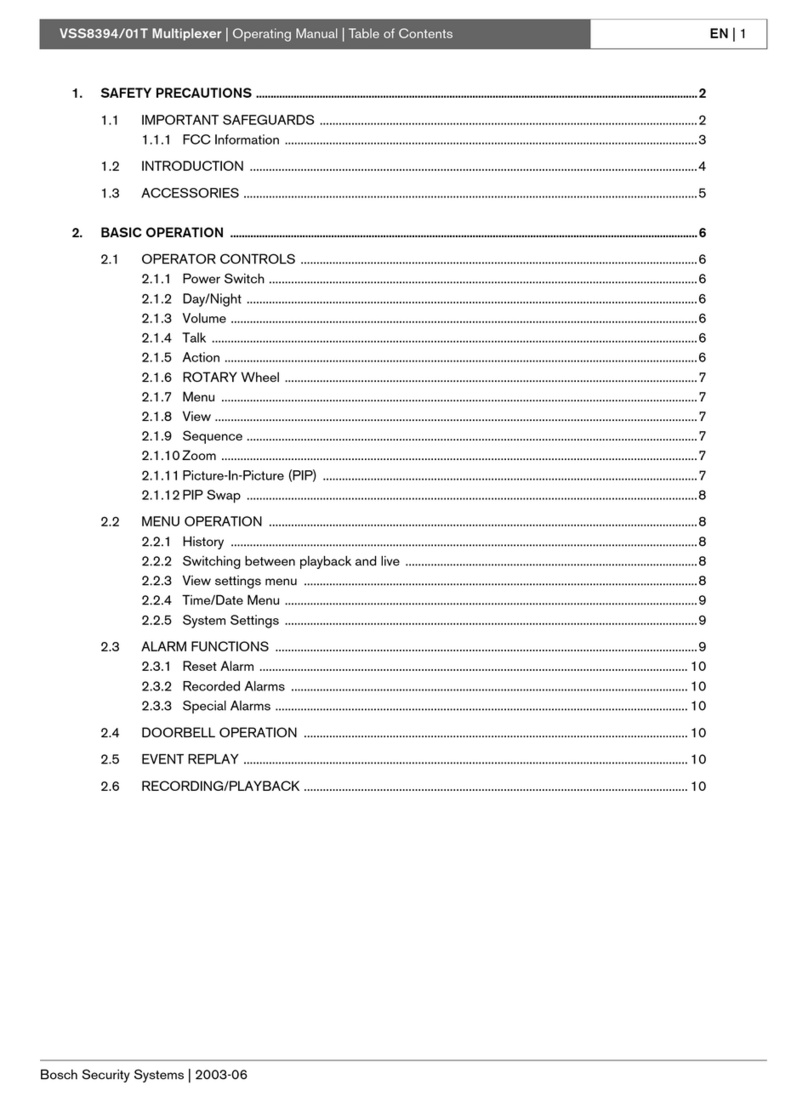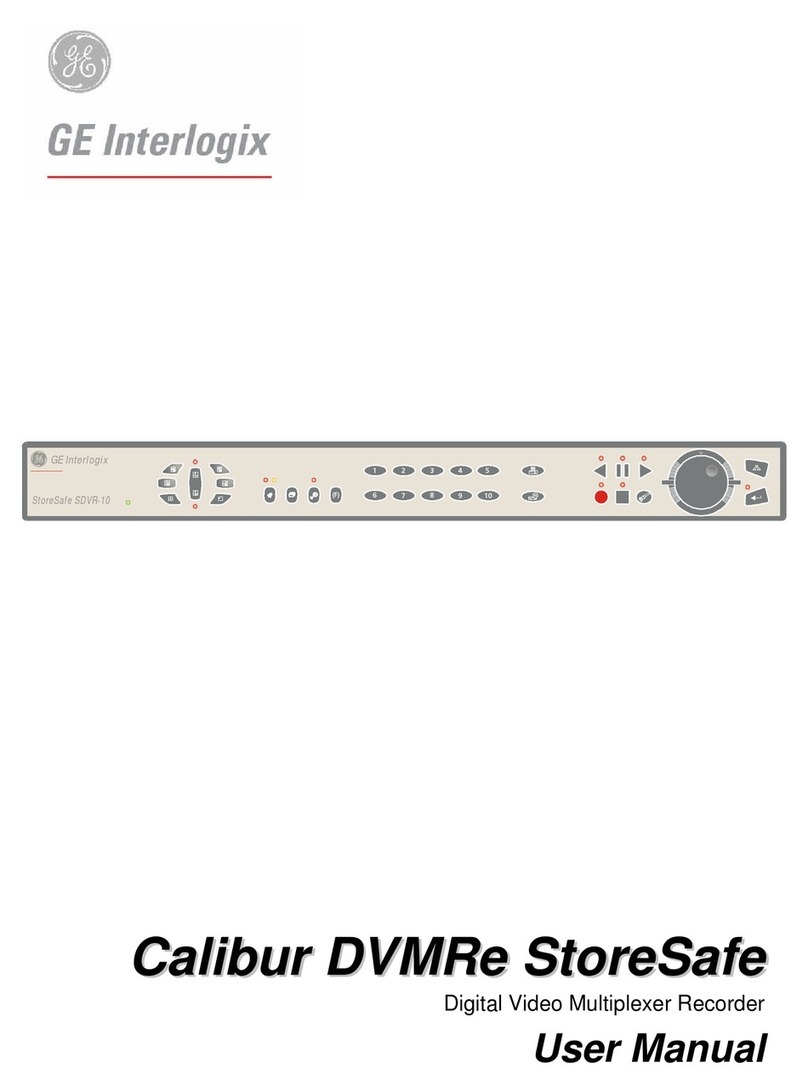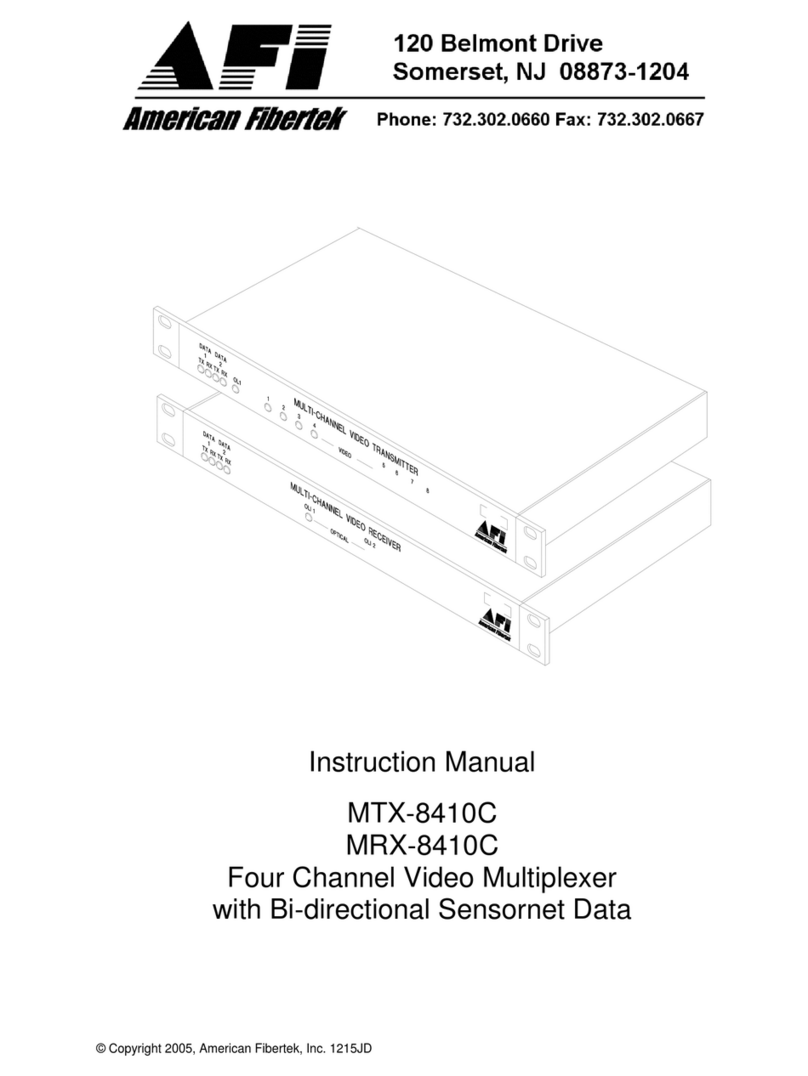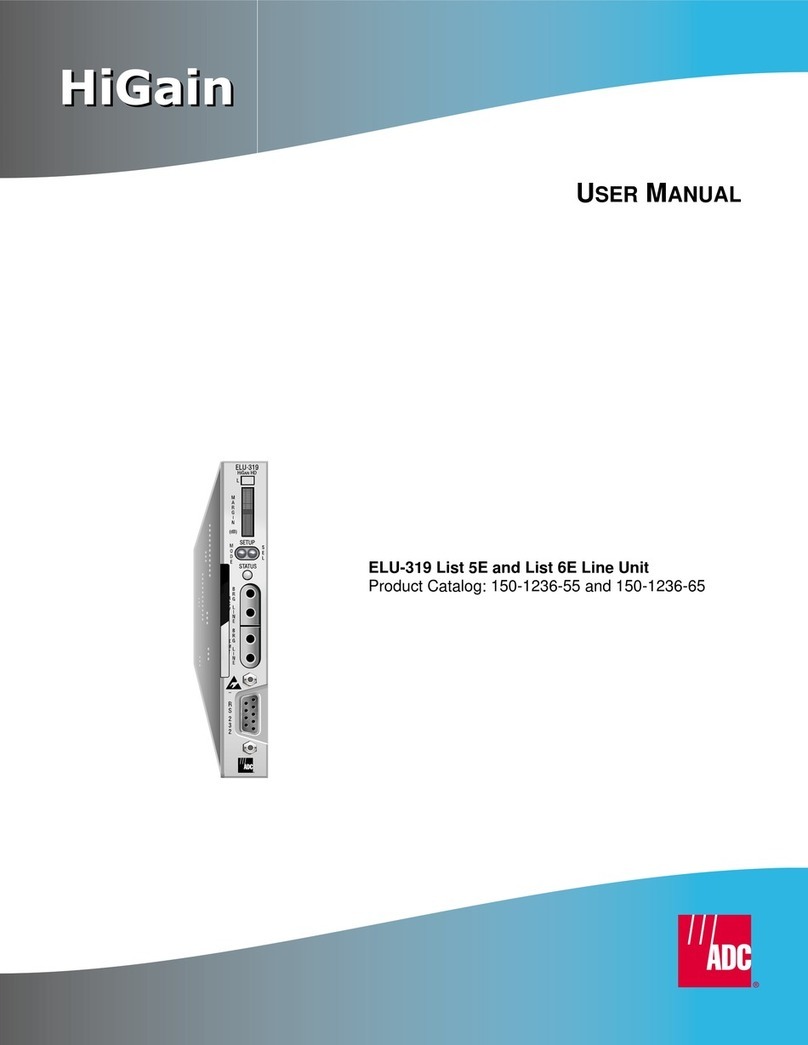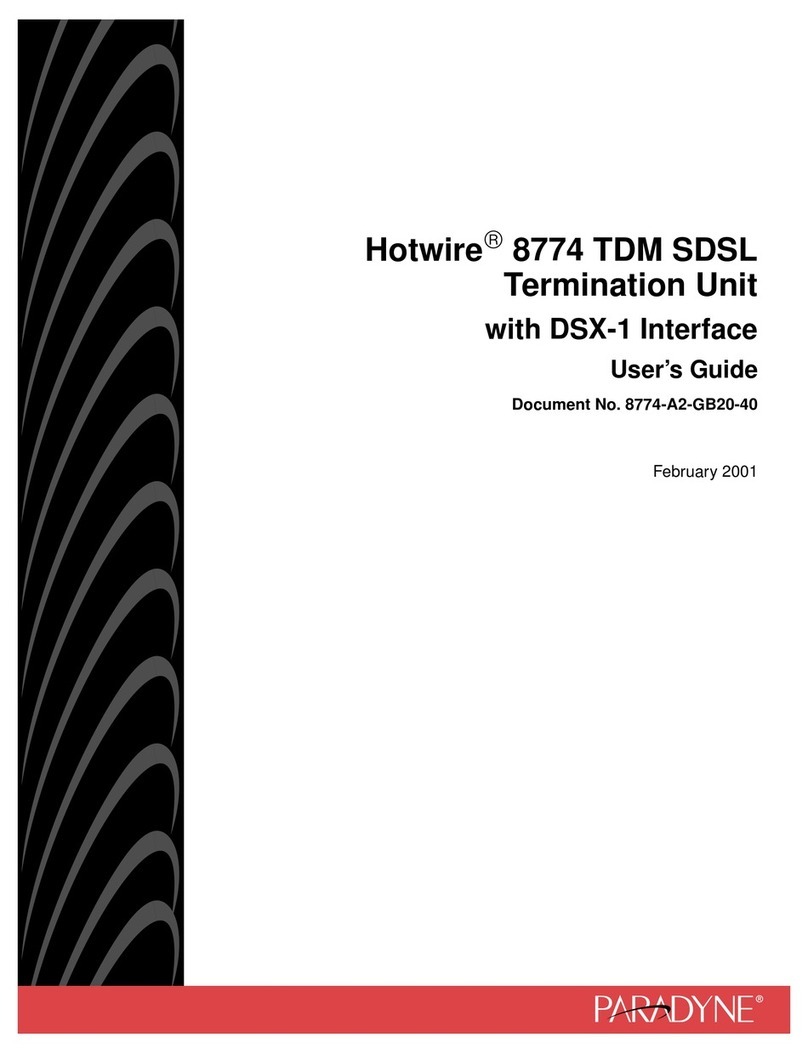
Page 4
PRO-MUX-1 Conguration Guide
Basic Routing
Basic routing functions on the PRO-MUX are designed to give the user control over which Outputs
receive sentences from the Inputs. The purpose of routing is to essentially dismiss messages that
are not required for certain devices. This is better explained in the example below, where the fol-
lowing has been congured:
IN 1 sentences from GPS 1 are only going to OUT 2.
IN 2 sentences from GPS 2 are going to OUT1, OUT 2, OUT 3 and OUT 4.
IN 3 sentences from AIS are going to OUT 1 and OUT 2.
IN 4 sentences from USG-2 are going to OUT 2 and OUT 4.
Note that the friendly names are used here to provide easy identication of the device on each
input. This is extremely useful for an installer who may be visiting the vessel for the rst time, as
it saves a large amount of time which would otherwise be spent tracing wires back to understand
what device is connected to each I/O Port.
Advanced Routing
Basic routing here gives a good amount of control over the Inputs and Outputs, however some-
times it is required to go further into the connections and dene what messages specically from
each Input device are sent to each Output. This is where advanced routing comes in.
For example, if the USG-2 on IN 4 is sending 7 messages, but only 3 of these are required for the
NGW-1 then the advanced routing can be used to lter out unnecessary sentences.
Advanced routing is an extremely powerful tool which can be used to reduce the amount of ‘trac’
from messages going to a certain Listener, which can be especially useful if the device connected
to the output has a lower baud rate (lower bandwidth).
Once the NMEA 0183 talker (USG) is sending data to the PRO-MUX, the ‘Capture Live Sentences’
option in the Advanced Routing page can be used to automatically populate the table with every
sentence currently available. These sentences must be ticked to ‘Enable Rule’, which will begin to
further populate the table with ‘Block’ and ‘Pass’ options for each output.
From here, all sentences which are not required for the specied Outputs must be blocked, and the
ones required for each listener set to ‘pass’. See diagram below:
